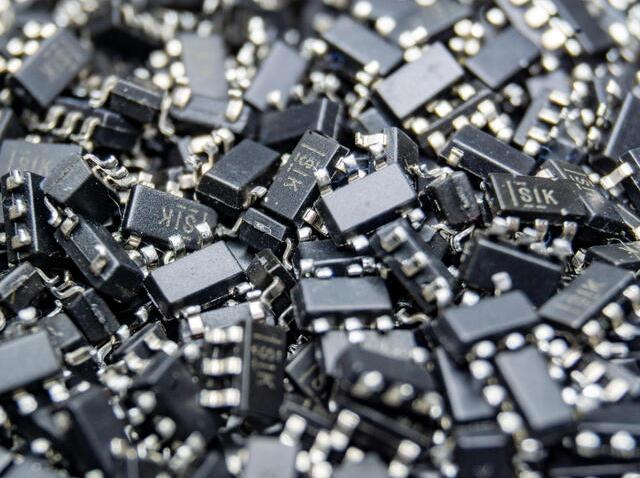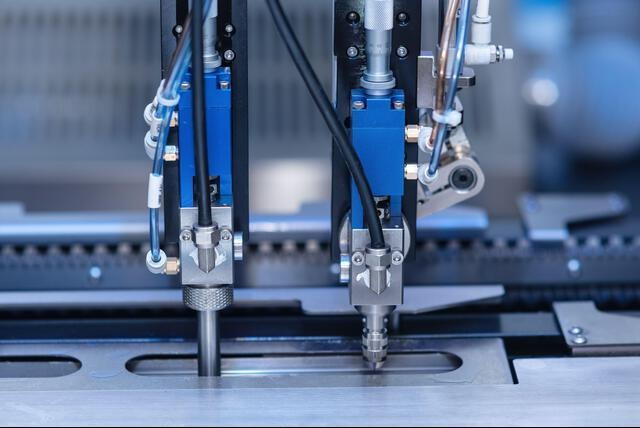Content Menu
● Understanding SMT Stencils
>> Importance of Maximizing SMT Stencil Life Cycle
● Factors Affecting SMT Stencil Life Cycle
>> Material Quality
>> Usage Conditions
>> Cleaning Practices
>> Storage Conditions
● Strategies to Maximize SMT Stencil Life Cycle
>> 1. Choose High-Quality Materials
>> 2. Optimize Cleaning Procedures
>> 3. Implement Proper Handling Techniques
>> 4. Monitor Usage Frequency
>> 5. Store Stencils Correctly
>> 6. Regularly Inspect Stencils
>> 7. Use the Right Solder Paste
>> 8. Train Staff on Best Practices
>> 9. Keep a Maintenance Log
>> 10. Consider Automation
● Conclusion
● FAQ
>> 1. What materials are best for SMT stencils?
>> 2. How often should SMT stencils be cleaned?
>> 3. What are the signs that an SMT stencil needs to be replaced?
>> 4. Can improper storage damage SMT stencils?
>> 5. How can I train my staff on proper stencil handling?
Surface Mount Technology (SMT) stencils play a crucial role in the electronics manufacturing process. They are essential for applying solder paste to printed circuit boards (PCBs) accurately and efficiently. However, the life cycle of SMT stencils can be affected by various factors, including material quality, usage, and maintenance practices. In this article, we will explore strategies to maximize the life cycle of your SMT stencils, ensuring that they remain effective and cost-efficient throughout their use.

Understanding SMT Stencils
SMT stencils are thin sheets made from materials such as stainless steel or polymer. They feature openings that correspond to the pads on a PCB where solder paste needs to be applied. The stencil is aligned with the PCB, and solder paste is spread over the stencil, filling the openings. When the stencil is removed, the paste remains on the PCB, ready for component placement.
Importance of Maximizing SMT Stencil Life Cycle
Maximizing the life cycle of SMT stencils is vital for several reasons:
1. Cost Efficiency: Stencils can be expensive to produce, especially custom ones. By extending their life cycle, manufacturers can reduce costs associated with frequent replacements.
2. Quality Control: Worn or damaged stencils can lead to poor solder paste application, resulting in defects in the final product. Maintaining stencils in good condition helps ensure high-quality manufacturing.
3. Production Efficiency: Frequent stencil changes can slow down production lines. By maximizing the life cycle of stencils, manufacturers can maintain a steady workflow.
Factors Affecting SMT Stencil Life Cycle
Several factors can influence the life cycle of SMT stencils:
Material Quality
The material from which the stencil is made significantly impacts its durability. Stainless steel stencils tend to have a longer life cycle compared to polymer stencils due to their resistance to wear and tear.
Usage Conditions
The conditions under which stencils are used can also affect their longevity. High-speed production lines with frequent stencil changes may lead to faster wear. Additionally, the type of solder paste used can impact stencil life; some pastes are more abrasive than others.
Cleaning Practices
Proper cleaning is essential for maintaining the integrity of SMT stencils. Inadequate cleaning can lead to paste build-up, which can damage the stencil and affect the quality of the solder paste application.
Storage Conditions
How stencils are stored when not in use can also influence their life cycle. Stencils should be stored flat and in a controlled environment to prevent warping or damage.

Strategies to Maximize SMT Stencil Life Cycle
To ensure that your SMT stencils last as long as possible, consider implementing the following strategies:
1. Choose High-Quality Materials
Investing in high-quality stainless steel stencils can significantly enhance their durability. While the initial cost may be higher, the long-term savings from reduced replacements and improved quality make it worthwhile.
2. Optimize Cleaning Procedures
Develop a thorough cleaning protocol for your stencils. Use appropriate cleaning solutions and methods to remove solder paste residue without damaging the stencil. Regular cleaning after each use can prevent build-up and prolong the stencil's life.
3. Implement Proper Handling Techniques
Train operators on the correct handling of stencils. Avoid bending or dropping stencils, as physical damage can lead to premature wear. Use appropriate tools for alignment and placement to minimize the risk of damage.
4. Monitor Usage Frequency
Keep track of how often each stencil is used. If a stencil is used excessively, consider rotating it with others to distribute wear evenly. This practice can help extend the life of all stencils in your inventory.
5. Store Stencils Correctly
When not in use, store stencils in a flat position, ideally in a protective case. Avoid stacking heavy items on top of stencils, as this can cause warping. Maintain a controlled environment to prevent exposure to extreme temperatures or humidity.
6. Regularly Inspect Stencils
Conduct regular inspections of your stencils for signs of wear or damage. Look for issues such as bent edges, clogged openings, or surface scratches. Addressing these problems early can prevent further damage and extend the stencil's life.
7. Use the Right Solder Paste
Select solder paste that is compatible with your stencils and production process. Some pastes are more abrasive and can wear down stencils faster. Consult with your solder paste supplier for recommendations on the best products for your specific stencils.
8. Train Staff on Best Practices
Ensure that all staff involved in the SMT process are trained on best practices for stencil use and maintenance. Knowledgeable operators are less likely to make mistakes that could damage stencils.
9. Keep a Maintenance Log
Maintain a log of stencil usage, cleaning, and inspections. This record can help identify patterns in wear and inform decisions about when to replace or repair stencils.
10. Consider Automation
If feasible, consider automating the stencil cleaning process. Automated cleaning systems can provide consistent and thorough cleaning, reducing the risk of human error and extending stencil life.
Conclusion
Maximizing the life cycle of your SMT stencils is essential for maintaining cost efficiency, quality control, and production efficiency in electronics manufacturing. By understanding the factors that affect stencil longevity and implementing best practices for usage, cleaning, and storage, manufacturers can significantly extend the life of their stencils. Investing in high-quality materials and training staff on proper handling techniques will pay off in the long run, ensuring that your SMT stencils remain effective and reliable throughout their use.
In summary, the life cycle of SMT stencils can be maximized through careful attention to material quality, usage conditions, cleaning practices, and storage methods. By following the strategies outlined in this article, manufacturers can achieve better performance and lower costs in their production processes.

FAQ
1. What materials are best for SMT stencils?
Answer: Stainless steel is generally the best material for SMT stencils due to its durability and resistance to wear. Polymer stencils can be used for specific applications but may have a shorter life cycle.
2. How often should SMT stencils be cleaned?
Answer: SMT stencils should be cleaned after each use to prevent solder paste build-up and maintain their integrity.
3. What are the signs that an SMT stencil needs to be replaced?
Answer: Signs include visible wear, bent edges, clogged openings, or surface scratches that affect the stencil's performance.
4. Can improper storage damage SMT stencils?
Answer: Yes, improper storage, such as stacking heavy items on stencils or exposing them to extreme temperatures, can lead to warping and damage.
5. How can I train my staff on proper stencil handling?
Answer: Provide training sessions that cover best practices for handling, cleaning, and storing SMT stencils, along with hands-on demonstrations to reinforce learning.




















